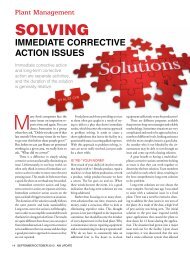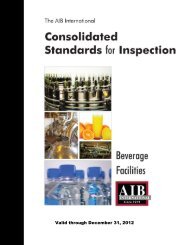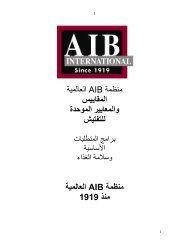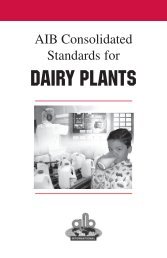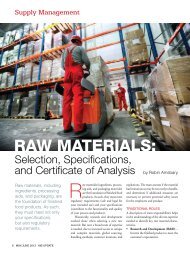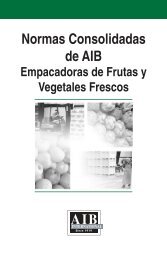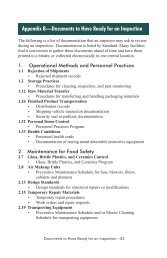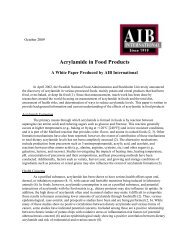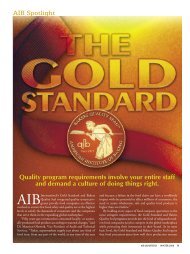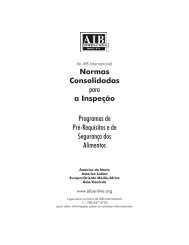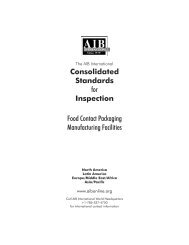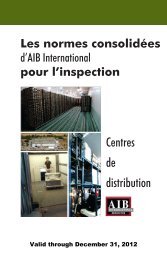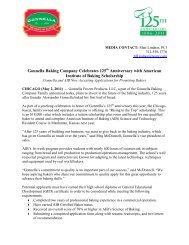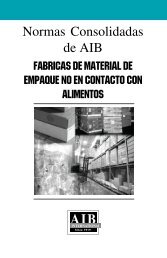Consolidated Standards for Inspection Food Distribution Centers
Consolidated Standards for Inspection Food Distribution Centers
Consolidated Standards for Inspection Food Distribution Centers
You also want an ePaper? Increase the reach of your titles
YUMPU automatically turns print PDFs into web optimized ePapers that Google loves.
Automatic Assessment of Unsatisfactory<br />
The following list includes examples of a few commonly found conditions that require an assessment of Unsatisfactory. This<br />
list only represents examples of unsatisfactory conditions, and is not complete. Similar conditions not specifi cally stated will be<br />
assessed by the inspector.<br />
1. Operational Methods and Personnel Practices<br />
a. Holding temperatures (refrigerators or coolers) in excess of 40°F or 4°C <strong>for</strong> microbiologically sensitive ingredients or<br />
products (Note: the exact temperature limit may vary depending on country regulation)<br />
b. Open sores or boils on personnel who have direct contact with product, ingredients, or product zones<br />
c. Torn liquid receiving strainer<br />
d. Ingredients that are internally infested<br />
2. Maintenance <strong>for</strong> <strong>Food</strong> Safety<br />
a. Flaking paint, rust, or other materials in product zone where product contamination is likely<br />
b. Maintenance activity or equipment condition resulting in oil, metal, or other <strong>for</strong>eign material in or over a product<br />
zone<br />
3. Cleaning Practices<br />
a. The presence of extensive amounts of mold either on or near product zones<br />
b. Widespread infestation above sensitive or exposed ingredients, above product zones, or in equipment<br />
4. Integrated Pest Management<br />
a. Insects<br />
i. Housefl ies or fruit fl ies in excessive numbers with little control provided<br />
ii. Any cockroach activity on or in a product zone<br />
b. Rodents<br />
i. Visual presence of live rodent(s)<br />
ii. Evidence of rodent excreta or gnaw marks on raw materials or fi nished product<br />
iii. Decomposed rodent<br />
c. Birds<br />
i. Birds residing in processing areas or warehouses<br />
ii. Bird excreta on product zones, raw materials, or fi nished product<br />
d. Pesticides used inconsistently with label directions<br />
5. Adequacy of the Prerequisite and <strong>Food</strong> Safety Programs<br />
a. Non-compliance with written Programs<br />
i. Failure to comply with HACCP critical limits or monitoring requirements<br />
b. Poorly defi ned written Prerequisite Programs<br />
i. Inadequate or ineffective implementation of a Prerequisite Program resulting in actual or likely product<br />
contamination<br />
c. Failure to comply with regulatory mandates<br />
xii



